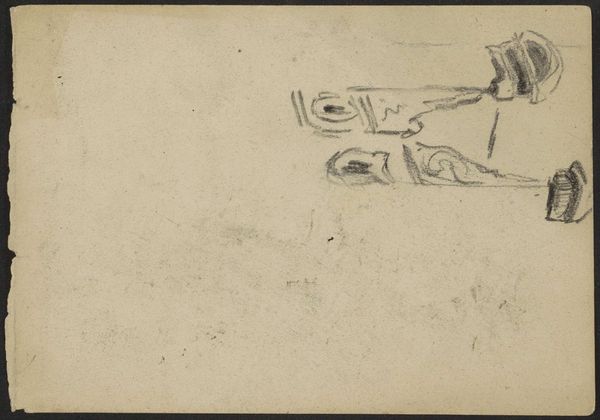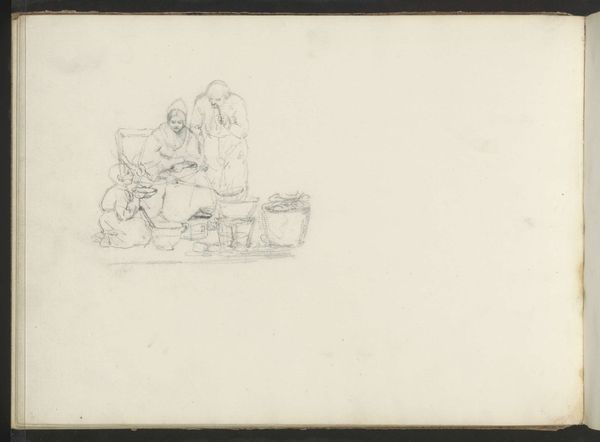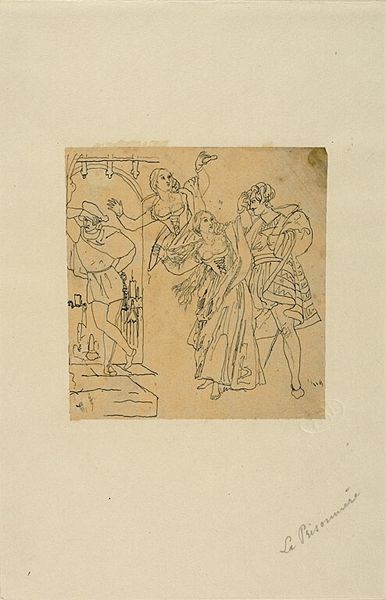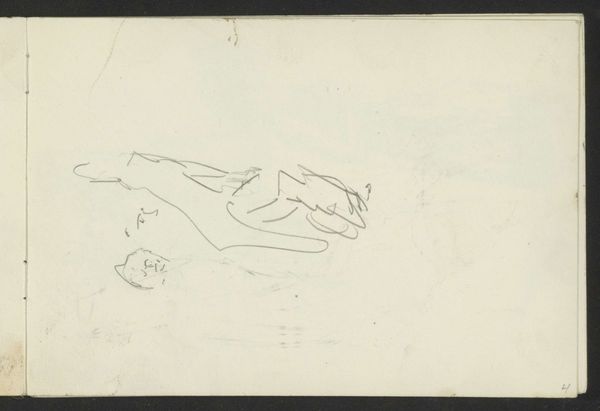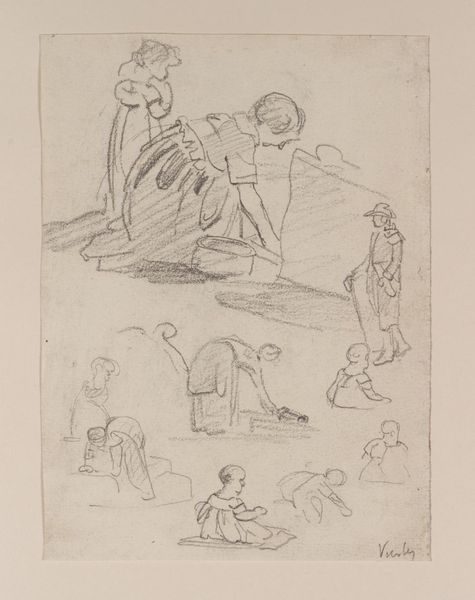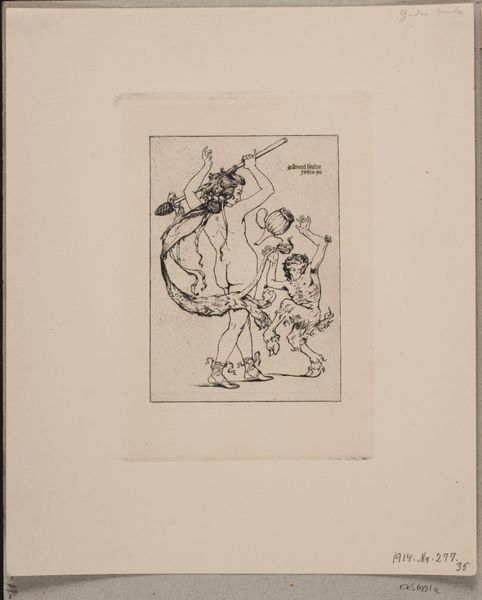
drawing, print, paper, ink, ink-drawings, pen
#
drawing
# print
#
impressionism
#
figuration
#
paper
#
personal sketchbook
#
ink
#
ink-drawings
#
pen-ink sketch
#
pen
#
nude
Dimensions: 41 × 40 mm
Copyright: Public Domain
Curator: We are looking at "Study of Bathers" by Rodolphe Bresdin. It’s an ink drawing, likely a pen-and-ink sketch, on paper, housed here at The Art Institute of Chicago. Editor: It’s remarkably intimate; feels like a glimpse into the artist's sketchbook. Raw, immediate… almost voyeuristic, perhaps? The hurried, sketchy lines give the figures a sense of motion, or fleeting existence. Curator: Absolutely. Bresdin, though admired by some of his contemporaries, never quite fit into the established art world of 19th-century France. His artistic style was very intricate. He wasn't fully aligned with movements like Impressionism. This "Study", precisely because of its raw immediacy as you said, offers us a closer look at the labour behind artistic creation at this time. What kind of access did artists need to this subject matter, and how would they then disseminate such works for public consumption? Editor: You're right. There’s something incredibly potent about the relationship between the artistic subject, its author, and those empowered enough to commission or, indeed, restrict its circulation. Looking closer at the paper's texture—its age, the ink's weight—the work evokes a specific social stratum, as do the bodies themselves. Are they goddesses, or simply women in respite, observed and sketched to test skill and capacity? It forces one to ask: who did the work serve at the time, who could even see this, and in what context? Curator: His focus on meticulous details and rather old-fashioned themes certainly stood apart, even making him an outsider among other artists who were also operating outside of the academy’s influence. I imagine that sort of social standing and isolation also impacted his selection of tools or limited resources. The seeming casualness of it all also belies the physical and social act of obtaining these resources. Editor: This reminds me of the debates about artistic value, in its moment and ours; even its continued presence in institutions like this museum influences public values and perceptions, both then and now. Seeing works such as this helps to dismantle romanticized ideas about art, to reveal these tangible details. Curator: It certainly allows us to rethink how labour and visibility function in creating something so enduring and so publicly celebrated. Editor: Precisely. An excellent point for us to end on, I think.
Comments
No comments
Be the first to comment and join the conversation on the ultimate creative platform.

